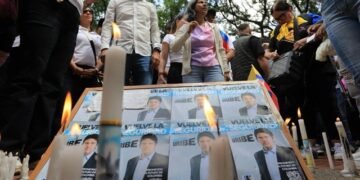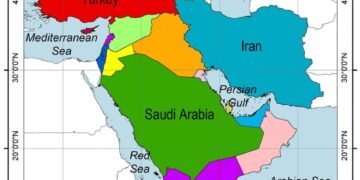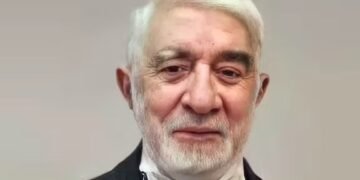Justin Ha does everything he can to avoid driving during peak traffic in Toronto.
Living in the city’s east end, the University of Toronto student relies on transit to get to school. But sometimes driving is unavoidable, whether borrowing his parents’ car or using a car-share service.
“There’s always that stress any driver feels during rush hour,” he told CP24.com. “And then there are unexpected situations. One Friday evening, I was stuck on the 401 for two hours because of a tanker truck accident.”
Markham resident Alessandro Sisti shares the sentiment. He often drives downtown to visit friends or, as a caregiver, to make hospital trips. Journeys that should take 40 minutes without traffic often double in time during rush hour.
“At best, I’m resigned to it,” Sisti said. “But I’m also constantly worried about being late or frustrated by how long it takes.”
They’re not alone. Gridlock is a top concern for Greater Toronto Area (GTA) residents, and Toronto’s congestion problem has reached critical levels.
A 2023 study by the Toronto Region Board of Trade estimated that traffic congestion costs the GTA $11 billion annually. Another report by the Canadian Centre for Economic Analysis (CANCEA) pegged the economic and social costs for the Greater Toronto and Hamilton Area (GTHA) at a staggering $47 billion.
While Toronto’s traffic woes are severe, the city is not alone in grappling with congestion.
Lessons from Manhattan
This month, New York City introduced a USD $9 congestion charge for vehicles traveling south of Central Park during peak hours on weekdays and weekends. The toll drops to USD $2.25 during off-peak times, with the revenue funneled into improving public transit.
Though public reaction was mixed, the city reported a 7.5% drop in traffic into the congestion zone during the first week, amounting to 43,000 fewer cars daily compared to the previous year.
Other cities like London, Stockholm, and Singapore have successfully implemented similar charges. But Manhattan’s program marks the first in North America.
University of Toronto professor Matti Siemiatycki calls the move a game-changer.
“If you can make it in New York, you can make it anywhere,” Siemiatycki told CP24.com. “It’s a question of whether this model can succeed in other North American cities, like Toronto.”
Could It Work in Toronto?
Toronto could theoretically implement a similar congestion charge, but there are key differences between Toronto and Manhattan.
Manhattan’s system relies on cordon tolling, using clearly defined geographic boundaries and license plate-tracking equipment. In Toronto, the many entry points to the downtown core would make this setup more complex.
Another factor is Toronto’s slower downtown recovery. “Our downtown has bounced back much slower than other cities,” Siemiatycki noted. “We’d need to carefully model any congestion charge to avoid further harming the core.”
Instead of cordon tolling, Siemiatycki suggests targeting Toronto’s major highways. “I’d favor tolls on the inner ring highways—like the 401, the 427, the DVP, and the Gardiner—because that’s where congestion is worst.”
Political Resistance
Toronto has considered road tolls before. In 2017, then-Mayor John Tory proposed tolling the Gardiner Expressway and Don Valley Parkway. However, then-premier Kathleen Wynne blocked the idea.
Since then, political momentum for congestion charges has stalled. The city’s current congestion management plan, adopted last fall, focuses on better coordination of construction activities, deploying 75 traffic agents, and streamlining event approvals—but it explicitly excludes congestion charges.
Provincial cooperation would also be required to implement tolls, but Ontario Premier Doug Ford’s government has firmly opposed road tolls.
“The Ford government will never add a tax or toll to any road in Ontario,” said Ontario Transportation Minister Prabmeet Sarkaria’s office in a statement.
Transit Shortcomings
Experts agree that transit improvements are crucial for any congestion charge to be equitable. Unlike New York, which boasts an extensive and accessible transit system, Toronto’s network is far less robust.
“It’s unfair to tax people stuck in their cars when they don’t have viable alternatives,” said Toronto Councillor Brad Bradford.
Siemiatycki echoed this sentiment, noting that public transit needs major upgrades across Toronto and its suburbs.
“A recent trip from Toronto’s east end to Newmarket took me 45 minutes by car but over two hours by public transit,” he said. “That’s not a viable alternative.”
To make transit a realistic option, significant investments would be needed in Scarborough, North York, Etobicoke, and surrounding cities like Vaughan, Markham, and Mississauga.
Congestion Costs Either Way
Siemiatycki emphasized that while congestion charges aren’t a silver bullet, they should be part of Toronto’s broader congestion management strategy.
“Congestion already has a cost—it’s just less visible than a $10 charge,” he said. “Toronto’s gridlock contributes to its high cost of living and lost economic productivity.”
Toronto Metropolitan University professor Matthias Sweet agreed. “Without policies like congestion pricing, you’re essentially accepting that traffic isn’t bad enough to justify solutions,” he said.
He warned that simply building more transit and roads won’t solve Toronto’s gridlock. “There are too many reasons for people to travel here. Demand will always outpace supply.”
A Divided Public
Despite political resistance, residents like Ha and Sisti are open to a congestion charge if it reduces traffic.
“I know most people don’t love the idea,” Sisti said. “But once they see how much time they save, I think many would find it worthwhile.”
For now, Toronto seems unlikely to adopt Manhattan’s model. But as congestion costs continue to mount, the pressure to consider bold solutions may grow.
Justin Ha does everything he can to avoid driving during peak traffic in Toronto.
Living in the city’s east end, the University of Toronto student relies on transit to get to school. But sometimes driving is unavoidable, whether borrowing his parents’ car or using a car-share service.
“There’s always that stress any driver feels during rush hour,” he told CP24.com. “And then there are unexpected situations. One Friday evening, I was stuck on the 401 for two hours because of a tanker truck accident.”
Markham resident Alessandro Sisti shares the sentiment. He often drives downtown to visit friends or, as a caregiver, to make hospital trips. Journeys that should take 40 minutes without traffic often double in time during rush hour.
“At best, I’m resigned to it,” Sisti said. “But I’m also constantly worried about being late or frustrated by how long it takes.”
They’re not alone. Gridlock is a top concern for Greater Toronto Area (GTA) residents, and Toronto’s congestion problem has reached critical levels.
A 2023 study by the Toronto Region Board of Trade estimated that traffic congestion costs the GTA $11 billion annually. Another report by the Canadian Centre for Economic Analysis (CANCEA) pegged the economic and social costs for the Greater Toronto and Hamilton Area (GTHA) at a staggering $47 billion.
While Toronto’s traffic woes are severe, the city is not alone in grappling with congestion.
Lessons from Manhattan
This month, New York City introduced a USD $9 congestion charge for vehicles traveling south of Central Park during peak hours on weekdays and weekends. The toll drops to USD $2.25 during off-peak times, with the revenue funneled into improving public transit.
Though public reaction was mixed, the city reported a 7.5% drop in traffic into the congestion zone during the first week, amounting to 43,000 fewer cars daily compared to the previous year.
Other cities like London, Stockholm, and Singapore have successfully implemented similar charges. But Manhattan’s program marks the first in North America.
University of Toronto professor Matti Siemiatycki calls the move a game-changer.
“If you can make it in New York, you can make it anywhere,” Siemiatycki told CP24.com. “It’s a question of whether this model can succeed in other North American cities, like Toronto.”
Could It Work in Toronto?
Toronto could theoretically implement a similar congestion charge, but there are key differences between Toronto and Manhattan.
Manhattan’s system relies on cordon tolling, using clearly defined geographic boundaries and license plate-tracking equipment. In Toronto, the many entry points to the downtown core would make this setup more complex.
Another factor is Toronto’s slower downtown recovery. “Our downtown has bounced back much slower than other cities,” Siemiatycki noted. “We’d need to carefully model any congestion charge to avoid further harming the core.”
Instead of cordon tolling, Siemiatycki suggests targeting Toronto’s major highways. “I’d favor tolls on the inner ring highways—like the 401, the 427, the DVP, and the Gardiner—because that’s where congestion is worst.”
Political Resistance
Toronto has considered road tolls before. In 2017, then-Mayor John Tory proposed tolling the Gardiner Expressway and Don Valley Parkway. However, then-premier Kathleen Wynne blocked the idea.
Since then, political momentum for congestion charges has stalled. The city’s current congestion management plan, adopted last fall, focuses on better coordination of construction activities, deploying 75 traffic agents, and streamlining event approvals—but it explicitly excludes congestion charges.
Provincial cooperation would also be required to implement tolls, but Ontario Premier Doug Ford’s government has firmly opposed road tolls.
“The Ford government will never add a tax or toll to any road in Ontario,” said Ontario Transportation Minister Prabmeet Sarkaria’s office in a statement.
Transit Shortcomings
Experts agree that transit improvements are crucial for any congestion charge to be equitable. Unlike New York, which boasts an extensive and accessible transit system, Toronto’s network is far less robust.
“It’s unfair to tax people stuck in their cars when they don’t have viable alternatives,” said Toronto Councillor Brad Bradford.
Siemiatycki echoed this sentiment, noting that public transit needs major upgrades across Toronto and its suburbs.
“A recent trip from Toronto’s east end to Newmarket took me 45 minutes by car but over two hours by public transit,” he said. “That’s not a viable alternative.”
To make transit a realistic option, significant investments would be needed in Scarborough, North York, Etobicoke, and surrounding cities like Vaughan, Markham, and Mississauga.
Congestion Costs Either Way
Siemiatycki emphasized that while congestion charges aren’t a silver bullet, they should be part of Toronto’s broader congestion management strategy.
“Congestion already has a cost—it’s just less visible than a $10 charge,” he said. “Toronto’s gridlock contributes to its high cost of living and lost economic productivity.”
Toronto Metropolitan University professor Matthias Sweet agreed. “Without policies like congestion pricing, you’re essentially accepting that traffic isn’t bad enough to justify solutions,” he said.
He warned that simply building more transit and roads won’t solve Toronto’s gridlock. “There are too many reasons for people to travel here. Demand will always outpace supply.”
A Divided Public
Despite political resistance, residents like Ha and Sisti are open to a congestion charge if it reduces traffic.
“I know most people don’t love the idea,” Sisti said. “But once they see how much time they save, I think many would find it worthwhile.”
For now, Toronto seems unlikely to adopt Manhattan’s model. But as congestion costs continue to mount, the pressure to consider bold solutions may grow.

 English
English






































